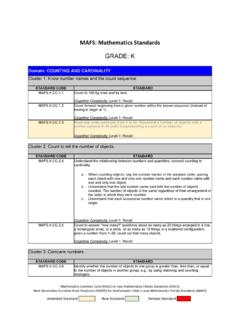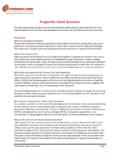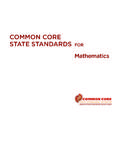Transcription of CCGPS Frameworks Student Edition Mathematics - …
1 CCGPS . Frameworks Student Edition Mathematics First Grade Unit Two Developing Base Ten Number Sense Georgia Department of Education common core Georgia Performance Standards framework First Grade Mathematics Unit 2. Unit 2: Developing Base Ten Number Sense TABLE OF CONTENTS. Overview ..3. Standards for Mathematical Content ..4. Standards for Mathematical Practice ..5. Enduring Understanding ..5. Essential Questions ..6. Concepts and Skills to Maintain ..6. Selected Terms and Symbols ..7. Strategies for Teaching and Learning ..7. common Misconceptions ..9. Evidence of Learning ..9. Tasks ..10. Button, Button!..11. Count it, Graph it ..14. One Minute Challenge ..19. More or Less Revisited ..25. Close, Far and in Between ..28. Finding Neighbors ..32. Make it Straight.
2 36. Number Hotel ..40. Mystery Number ..46. Tens and Some More ..48. Dropping Tens ..52. Riddle Me This ..57. Drop it, Web it, Graph it ..60. Mathematics GRADE 1 UNIT 2: Developing Base Ten Number Sense Georgia Department of Education Dr. John D. Barge, State School Superintendent May 2012 Page 2 of 64. All Rights Reserved Georgia Department of Education common core Georgia Performance Standards framework First Grade Mathematics Unit 2. OVERVIEW. Many of the skills and concepts in this unit are readdressed from Unit 1. Even though they are revisited, it is important to note that they are not necessarily presented in the same way as in Unit 1. In this unit, students will: rote count forward to 120 by counting on from any number less than 120. represent the number of a quantity using numerals.
3 Locate 0-100 on a number line. use the strategies of counting on and counting back to understand number relationships. explore with the 99 chart to see patterns between numbers, such as, all of the numbers in a column on the hundreds chart have the same digit in the ones place, and all of the numbers in a row have the same digit in the tens place. read, write and represent a number of objects with a written numeral (number form or standard form). build an understanding of how the numbers in the counting sequence are related each number is one more, ten more (or one less, ten less) than the number before (or after). work with categorical data by organizing, representing and interpreting data using charts and tables. pose questions with 3 possible responses and then work with the data that they collect.
4 All mathematical tasks and activities should be meaningful and interesting to students . Posing relevant questions, collecting data related to those questions, and analyzing the data creates a real world connection to counting. The meaning students attach to counting is the key conceptual idea on which all other number concepts are developed. students begin thinking of counting as a string of words, but then they make a gradual transition to using counting as a tool for describing their world. They must construct the idea of counting using manipulatives and have opportunities to see numbers visually (dot cards, tens frames, number lines, 0-99 chart, hundreds charts, arithmetic rack- ex: small frame abacus and physical groups of tens and ones). To count successfully, students must remember the rote counting sequence, assign one counting number to each object counted, and at the same time have a strategy for keeping track of what has already been counted and what still needs to be counted.
5 Only the counting sequence is a rote procedure. Most students can count forward in sequence. Counting on and counting back are difficult skills for many students . students will develop successful and meaningful counting strategies as they practice counting and as they listen to and watch others count. They should begin using strategies of skip counting by 2's, 5's, and 10's. The use of a 99 chart is an extremely useful tool to help students identify number relationships and patterns. Listed below are several reasons that support use of a 99 chart: A 0-99 chart begins with zero where a hundred chart begins with 1. We need to include zero because it is one of the ten digits and just as important as 1-9. A 100 chart puts the decade numerals (10, 20, 30, etc.) in the wrong row.
6 For instance, on a hundred chart, 20 appears at the end of the teens row, where it simply doesn't belong because Mathematics GRADE 1 UNIT 2: Developing Base Ten Number Sense Georgia Department of Education Dr. John D. Barge, State School Superintendent May 2012 Page 3 of 64. All Rights Reserved Georgia Department of Education common core Georgia Performance Standards framework First Grade Mathematics Unit 2. it is not a teen number. The number 20 is the beginning of the 20's decade; therefore it should be in the beginning of the 20's row as in a 99 chart. A 0-99 chart ends with the last two-digit number, 99, whereas a hundred chart ends in 100. Again, this is the wrong place for the number 100, it should begin a whole new chart because it is the first three-digit number.
7 0 1 2 3 4 5 6 7 8 9. 10 11 12 13 14 15 16 17 18 19. 20 21 22 23 24 25 26 27 28 29. 30 31 32 33 34 35 36 37 38 39. 40 41 42 43 44 45 46 47 48 49. 50 51 52 53 54 55 56 57 58 59. 60 61 62 63 64 65 66 67 68 69. 70 71 72 73 74 75 76 77 78 79. 80 81 82 83 84 85 86 87 88 89. 90 91 92 93 94 95 96 97 98 99. As students in first grade begin to count larger amounts, they should group concrete materials into tens and ones to keep track of what they have counted. This is an introduction to the concept of place value. students must learn that digits have different values depending on their position in numbers. Although the units in this instructional framework emphasize key standards and big ideas at specific times of the year, routine topics such as counting, time, money, positional words, patterns, and tallying should be addressed on an ongoing basis through the use of routines, centers, and games.
8 This first unit should establish these routines, allowing students to gradually understand the concept of number and time. students in first grade are only asked to construct tables and charts. Picture graphs and bar graphs are not introduced until 2nd grade. Although students are not expected to count money in first grade, they should use money as a manipulative for patterns, skip counting and any counting additional counting activities. STANDARDS FOR MATHEMATICAL CONTENT. Extend the counting sequence. Count to 120, starting at any number less than 120. In this range, read and write numerals and represent a number of objects with a written numeral. Represent and interpret data. Organize, represent, and interpret data with up to three categories; ask and answer questions about the total number of data points, how many in each category, and how many more or less are in one category than in another.
9 Mathematics GRADE 1 UNIT 2: Developing Base Ten Number Sense Georgia Department of Education Dr. John D. Barge, State School Superintendent May 2012 Page 4 of 64. All Rights Reserved Georgia Department of Education common core Georgia Performance Standards framework First Grade Mathematics Unit 2. STANDARDS FOR MATHEMATICAL PRACTICE. The Standards for Mathematical Practice describe varieties of expertise that Mathematics educators at all levels should seek to develop in their students . These practices rest on important processes and proficiencies with longstanding importance in Mathematics education. students are expected to: 1. Make sense of problems and persevere in solving them. 2. Reason abstractly and quantitatively. 3. Construct viable arguments and critique the reasoning of others.
10 4. Model with Mathematics . 5. Use appropriate tools strategically. 6. Attend to precision. 7. Look for and make use of structure. 8. Look for and express regularity in repeated reasoning. **Mathematical Practices 1 and 6 should be evident in EVERY lesson**. ENDURING UNDERSTANDINGS. students can count on starting at any number less than 120. Read, write and represent a number of objects with a written numeral Quantities can be compared using matching and words. Recognize and understand patterns on a 99 chart. (tens and ones). A number line can represent the order of numbers. Problems can be solved in different ways. Important information can be found in representations of data such as tallies, tables, and charts. Tables and charts can help make solving problems easier.









